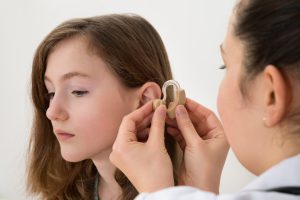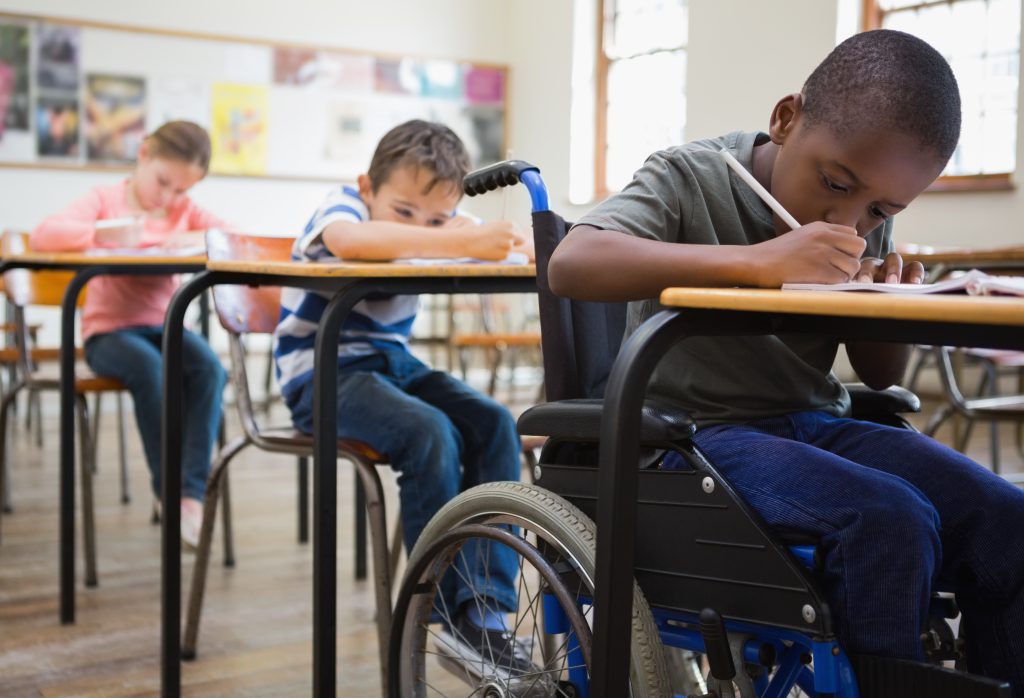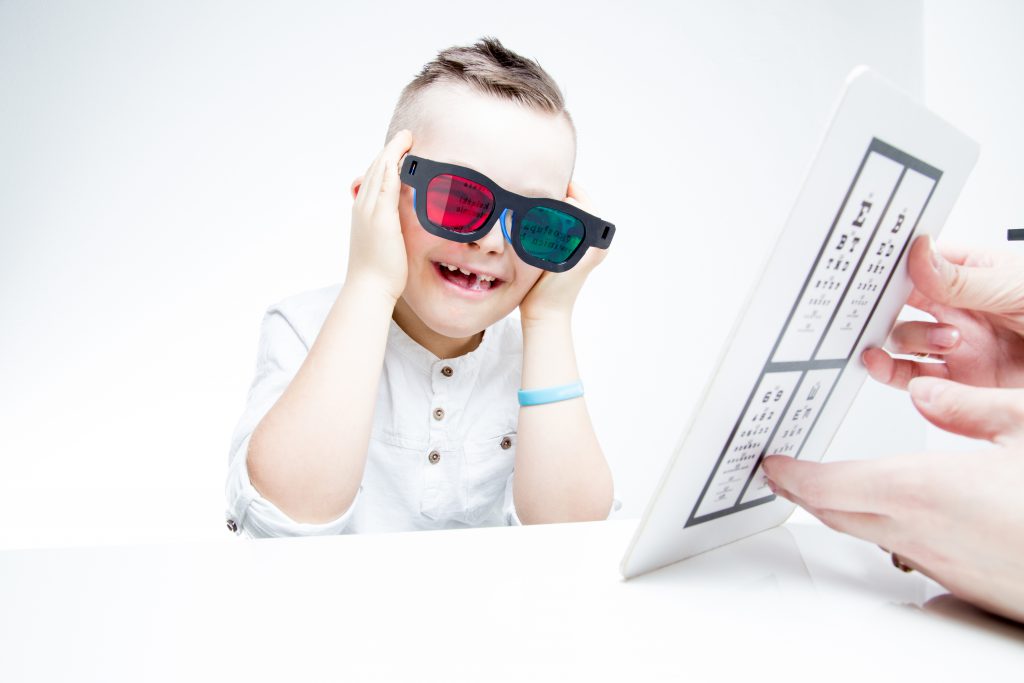The international community has made progress in grasping the experience of people with disabilities and safeguarding their rights. This article looks at the situation of children with disabilities in Latin America and Caribbean (UNICEF, 2013).
Understanding the context
Children with disabilities are one of the most marginalized and excluded groups in society. Facing daily discrimination in the form of negative attitudes, lack of adequate policies and legislation, they are effectively barred from realizing their rights to healthcare, education, and even survival.
They are often denied access to cultural or leisure activities or information and support about reproductive health, sexuality, and other areas that are vital for a child’s seamless integration into society and his/her growth and development into adulthood. (UNICEF, 2018)
Denying children with disabilities their right to education has a lifelong impact on learning, achievement and employment opportunities, hence hindering their potential economic, social and human development.
To ensure that all children enjoy their basic human rights without discrimination, disability inclusion should be mainstreamed in all policies and plans. This applies to education systems, which need to promote inclusion by ensuring the presence, participation and achievement of all children, including children with disabilities. (Jerome Bickenbach, 2011)
The legal framework
UN Convention on the Rights of the Child
The first international treaty to explicitly recognize the rights of children with disabilities.
The principle of non-discrimination is reflected under article 2 of the Convention on the Rights of the Child that expressly prohibits discrimination on the grounds of disability: “States parties shall respect and ensure the rights set forth in present Convention to each child…without discrimination of any kind, irrespective of the child’s…disability…or other status”. (United Nations Convention on the Rights of the Child 1989, Article 2) This explicit mention of disability as a prohibited ground for discrimination in article 2 is unique and can be explained by the fact that children with disabilities belong to one of the most vulnerable groups of children.
Article 23 of the Convention on the Rights of the Child refers to the obligation of States parties and recognizes that a child with mental or physical disabilities is entitled to enjoy a full and decent-life, in conditions that ensure dignity, promote self-reliance and facilitate the child’s active participation in the community. More importantly the article emphasizes the need of inclusion of children with disabilities in society and basic services in order to eradicate the stigmation that surrounds children with disabilities.
Article 24 (Health and health services) of the Convention on the Rights of the Child; articulates that each child is entitled to access to essential medical treatment. The significance of this article is paramount as children with disabilities need to gain better access and treatment in order for all children to be on the same level. Moreover this ensures that the right to life is respected and fulfilled.
The Latin American and Caribbean countries have signed, accented and ratified the Convention on the Rights of the Child in order for these states to meet their obligations they must harmonize national laws to adhere to the Convention on the Rights of the Child provisions.
UNCRPD & Optional Protocol
The Convention adopts a broad categorization of persons with disabilities and reaffirms that all persons with all types of disabilities must enjoy all human rights and fundamental freedoms. All of the provisions in the Convention apply to children with disabilities as well as adults. The general principles include respect for the evolving capacities of the child and children’s right to preserve their identity. 33 member states in the Latin American and Caribbean 31 have ratified the CRPD; of which 24 have ratified both the CRPD and its Optional Protocol (Alliance, International Disability, 2015)
 Article 7-Children and Disabilities, of the CRPD affirms the fundamental rights of all children with disabilities to the entire range of human rights inherent to all children. Requirement for the best interest of the child and for the participation of the children themselves in decision-making are particularly important for children with disabilities, whose interests and voice are undervalued.
Article 7-Children and Disabilities, of the CRPD affirms the fundamental rights of all children with disabilities to the entire range of human rights inherent to all children. Requirement for the best interest of the child and for the participation of the children themselves in decision-making are particularly important for children with disabilities, whose interests and voice are undervalued.
Article 24-Education, reflects a clear commitment to the principle of inclusive education as a goal. The article also addresses the specific needs of children with severe and complex sensory impairments for access to specific supports to learning such as sign language, Braille and low vision aids. Support to all children with disabilities has to be individually tailored and resourced both in terms of time and staffing. (Jerome Bickenbach, 2011)
Developing national Action Plans with appropriate timelines and measurable targets aligned with the principles enshrined in the CRPD is key for Latin American and Caribbean states in implementing these international standards at the national level.
UN Standard Rules on the Equalization of Opportunities for Persons with Disabilities 1993
The Committee on the Rights of the Child recommended that two documents be used as complementary tools in promoting the rights of children with disabilities. These rules are non-binding but they express a political commitment on the part of states to daft society to individuals with functional impairments. The rules address all aspects of the lives of persons with disabilities such as the preconditions for equal participation (awareness raising, medical care, rehabilitation, support services and accessibility. Target areas of equal participation (accessibility, education, family life and personal integrity)
UN Universal Declaration of Human Rights (UDHR) 1948
Article 25 states that motherhood and childhood are entitled to special care and assistance and that all children, regardless of whether they are born in or out of wedlock, shall enjoy the same social protection. Article 26 entitles everyone to equal access to education and allows parents the right to choose the kind of education given to their child.
Millennium Development Goals (MDG)
The MDG represent a crucial inclusive framework for advancing human rights and the quality of life of persons with disabilities. Despite the omission of specific reference to persons with disabilities, an international effort is now underway for the explicit inclusion of a disability dimension into the five year reviews of MDG achievement.
What is the impact of disability on children

- Non-inclusive society; which can be illustrated through a lack of education for disabled children insufficient tools such as hearing aids or special equipment to help overcome these barriers. Social and cultural barriers must be removed what is known as “attitudinal accessibility”, eliminating prejudice, discrimination and stigma.
- Legal or normative barriers, too, must be overcome for what is termed “programmatic accessibility”, affording careful attention to rules or provisions which are seemingly neutral but which allow or perpetuate barrier.s
- Lack of participation in public forums consequently results into disabled children being invisible. For instance the Millennium Development Goals are not for the most part disability inclusive. As a result, people with disabilities, who constitute 15% of the global population and are commonly amongst the poorest of the poor, have not fully benefited from many development and humanitarian response programmer. (UNICEF, 2018)
- Lack of access to education; a Brazilian case where a deaf persons do not receive education in their native language and they have to learn the Brazilian Sign Language. In Mexico a case was where a young boy that could never attend regular school because his community forbade it. (Alliance, International Disability, 2015)
- Sexual and reproductive health for girls with disabilities are far from being fulfilled; this linked with the lack of access to health services and health information.
- Children with disabilities are almost four times more likely to experience violence than non-disabled children. Stigma and prejudice related to disability as well as barriers in the environment make it much more difficult for children with disabilities to go to school to access healthcare or to participate in the community. (World Health Organization, ‘Violence against adults and children with disabilities’, 2012)
- In the region, children with disabilities still experience different forms of poverty, including extreme poverty and face enormous disparities of opportunity in participating and effectively being included in society.
How children with disabilities want to be perceived
“I’d like to see deaf children on TV. I’ve never seen any.”
“I’d like to see news on sports for people with disabilities, there are many games for deaf people.”
“I’d like to see news on how to make fewer stairs and more ramps…”
“I’d like to see a documentary about a child who has difficulty walking.”
“…things that are more real and informative, because lots of people don’t know about these problems.”
“I’d like to see even the President helping people with disabilities, as I think he’s not helping us now.”
“I’d like them to show how difficult it is for people with disabilities to study.”
“I’d like them to show that it’s wrong to leave someone with disabilities standing in the bus.”
“I’d like us to be on TV playing, studying.” “I’d like to see the news in sign language.”
“…to know more about athletes with disabilities. How they got to be where they are.” (UNICEF, 2013)

Moving forward
- Governments have the duty to harmonize national legislation with the UN CRPD, incorporating active consultation with civil society.
- In partnership with organizations of persons with disabilities undertake a comprehensive review of all legislation in order to ensure its conformity with relevant UN standards. All relevant legislation and regulations should include a prohibition of discrimination on grounds of disability.
- Provide for effective remedies in case of violations of the rights of children with disabilities and ensure that these remedies are accessible to children, families and caregivers.
- Develop national action plans that integrates the relevant provisions of all applicable international instruments. Such plans shall specify appropriate timeline targets as well as evaluation indicators.
- Conduct awareness-raising and educational campaigns for the public as well as specific groups of professionals/experts with the aim of preventing and addressing the de facto discrimination of children with disabilities.
- Implementation a system of community services and support for children with disabilities. (UNICEF, 2018)
- Encouraging the development of mechanisms to comply with the international commitments.
- Regional challenges are interrelated and thus demand joint and inclusive measure-comprising legal, administrative and judicial measures in order to promote a real paradigm shift in individual and social attitudes. (Alliance, International Disability, 2015)
Call to Action
Children with disabilities must be looked after by everyone carefully. We all need love and affection and a disabled child even more and a lifelong. We are all caregivers in that sense and not ‘only’ the member states.
Written by Igi Nderi
References
Alliance, International Disability. (2015, October 22). Advancement of the UN CRPD through the 2030 Agenda Towards Implementation in Latin America. Retrieved from Human Rights of People with Disabilities : https://www.internationaldisabilityalliance.org/sites/default/files/documents/final_lac_report.pdf
Committee United Nations Human Rights. (2007, March 30). Promoting the Rights of Children with Disabilities. Retrieved from UNICEF Innovation Research Centre: https://www.ohchr.org/EN/HRBodies/CRPD/Pages/ConventionRightsPersonsWithDisabilities.aspx
Documents, UN. (1948, December 10). United Nations. Retrieved from Universal Declaration of Human Rights: https://www.ohchr.org/EN/UDHR/Documents/UDHR_Translations/eng.pdf
Documents, UN. (1993, December 20). United Nations-Disability. Retrieved from Standard Rules on the Equalization of Opportunities for Persons with Disabilities: http://www.un-documents.net/sreopwd.htm
Jerome Bickenbach, T. D. (2011). World Report on Disability. Geneva: World Health Organisation . Retrieved from https://www.who.int/disabilities/world_report/2011/en/
UNICEF. (1989, November 20). United Nations Convention on the Rights of the Child. Retrieved from UN Documents : https://www.unicef.org/crc/files/Rights_overview.pdf
UNICEF. (2013, April 15). Rights of children and adolescents. Retrieved from Policies for the inclusion of children with disabilities: https://repositorio.cepal.org/bitstream/handle/11362/35980/Challenges-15-ECLAC-UNICEF_es.pdf;jsessionid=2F2A4A9CC790CABCF6684E33A267820A?sequence=1)
UNICEF. (2018, December 13). Disabilities. Retrieved from UNICEF: https://www.unicef.org/disabilities/)


